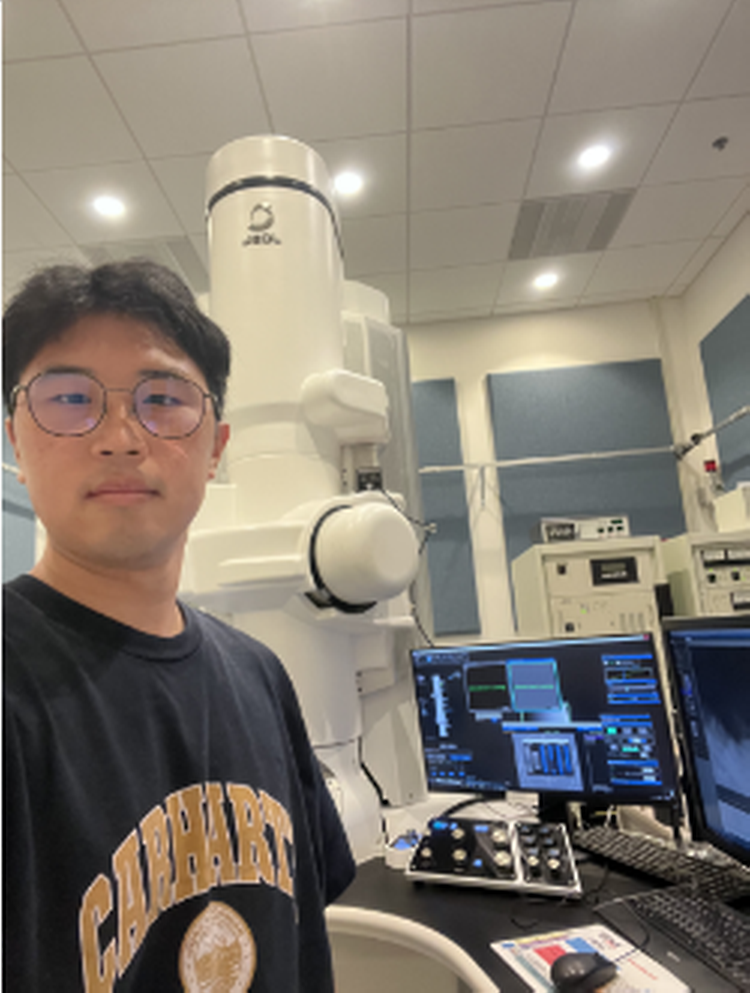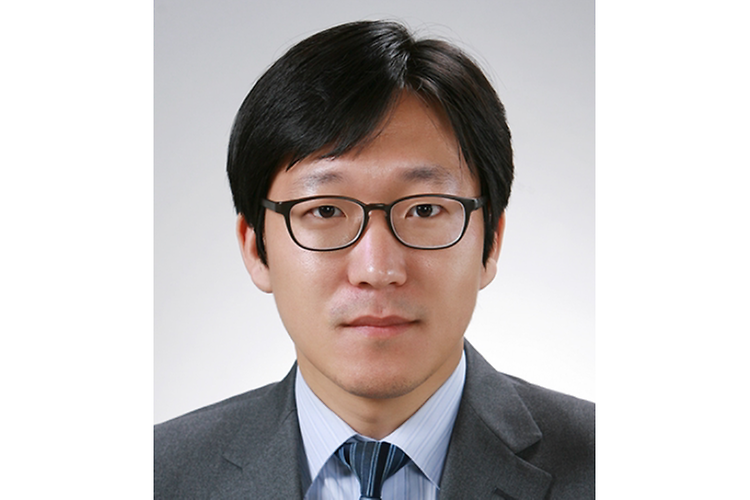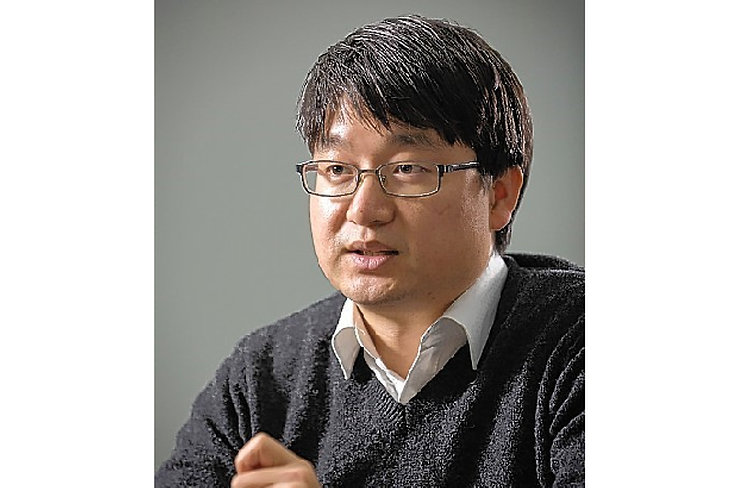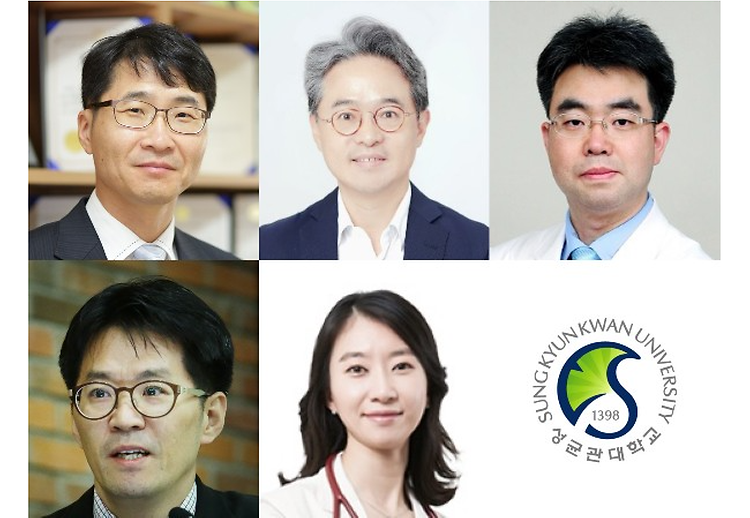-

Prof. Sunkook Kim's Develops Nanoporus IGZO Applicable to Visible-to-NIR detecting photo transistor
2022-11-16Prof. Sunkook Kim's (Department of Advanced Materials Science and Engineering) Develops Nanoporus IGZO Applicable to Visible-to-NIR detecting photo transistor Professor Sunkook Kim’s research team (Department of Advanced Materials Science and Engineering) proposed an approach for detecting wide spectral range using indium gallium zinc oxide (IGZO) phototransistors. IGZO phototransistors have limited applicability in broad spectral range detection; to solve this many research had been done using external photo-absorber. Our team developed nanoporous IGZO phototransistors, which can detect near infrared (NIR) without using any absorber. IGZO is optically transparent due to a bandgap of nearly 3–4 eV; thus, to extend the light detection range of IGZO, a laminated approach that introduces secondary materials has been suggested in previous reports. An additional optical absorption layer with a narrower bandgap on the IGZO thin film has been investigated in various studies. These absorption layers include CdSe, CdS, and PbS quantum dots; graphene dots; metal nanoparticles; and films of selenium. Heterojunctions of two-dimensional MoS2, graphene, and perovskite (CsPblxBr3-x) with IGZO films have also been investigated. To solve this problem, Sunkook Kim’s research team investigated the performance of nanoporous IGZO phototransistors. The nanopores throughout the entire thickness of ~ 30 nm in (IGZO) created by block co-polymer lithography. The process of creating a nonporous morphology is sophisticated and is accessed using a wafer-scale phototransistor array. See-through nanopores have edge functionalization with vacancies, which leads to a large subgap states within the conduction band minima and valence band maxima. These subgap states further contribute to detect NIR by employing photogating effect. The performance of the phototransistors is assessed in terms of photosensitivity (S) and photoresponsivity (R); both are of high magnitudes (S = 8.6×104 at ex = 638 nm and Pinc = 512 mW cm⁻2; R = 120 A W⁻1 at Pinc = 2 mW cm⁻2 for the same ex). Additionally, the 7 × 5 array of 35 phototransistors is effective in sensing and reproducing the input image by responding to selectively illuminated pixels. Prof. Kim said, “This study is significant for developing IGZO phototransistors for visible -NIR detection without using photo-absorber”. This study was supported by the SKKU Research Fellowship Program of Sungkyunkwan University and in part by the Basic Science Research Program through the National Research Foundation of Korea (NRF-2021R1A2B5B02002167, 2021M3H4A1A02056037, 2021R1I1A1A01060065, and 2021R1I1A1A01060078) and published on 13th June 2022 in ACS Nano (I.F:18.03) Paper name: Probing the Efficacy of Large-Scale Nonporous IGZO for Visible-to-NIR Detection Capability: An Approach toward High-Performance Image Sensor Circuitry DOI: https://doi.org/10.1021/acsnano.2c01773 Article by Sen Anamika

Prof. Sunkook Kim develops large area MoS2 film for transparent phototransistor
2022-11-16Prof. Sunkook Kim ((Department of Advanced Materials Science and Engineering) develops large area MoS2 film for transparent phototransistor by plasma assisted chemical vapor deposition technique. Professor Sunkook Kim’s research team (Department of Advanced Materials Science and Engineering) developed a route to synthesis low temperature plasma assisted large area MoS2 film for transparent phototransistor. Transparent devices on low-cost glass substrate using transition metal dichalcogenides (TMDs), required additional mechanical transfer which induces wrinkles, voids, cracks on the channel and hinder the mass production. TMDs such as MoS2 have attracted considerable attention or the fabrication of ultra-sensitive and ultrathin photodetectors because of their layer-dependent bandgap, optical transparency, high current on/off ratio, high carrier mobility, temperature stability, and large scalability. However, the synthesis of MoS2 required high temperature (> 600 °C), therefore growth on an inexpensive transparent substrate with low thermal budgets is challenging. Numerous techniques have been proposed for obtaining MoS2 at low temperature (< 400 °C) including MOCVD, ALD, PECVD etc. MOCVD required long sulfurization time for large area coverage, while ALD either required post annealing or produce rough film at low temperature. Few groups have used PECVD to grow large area MoS2 film at low temperature, however poor quality of the film hinder their application in transistor. Research team of Professor Sunkook Kim (Arindam Bala, Liu Na and all the authors) have synthesis large area MoS2 film on inexpensive slide glass (MARIENFELD.) by plasma assisted chemical vapor deposition technique (≤ 400 °C) and fabricated 7 × 7 array of transparent phototransistor without additional mechanical transfer, which can detect visible light (λ = 405 nm, 652 nm). Prof. Kim said, “This study is significant for developing low-cost smart glass technologies”. This research was supported in part by the National Research Foundation of Korea. (No. 2021R1A2B5B02002167, 2020H1D3A2A02103378, 2020R1I1A1A01052893) This work was supported by Institute of Information & communications Technology Planning & Evaluation (IITP) grant funded by the Korea government (MSIT) (No. 2021-0-01151) and published on 10th August 2022 in Advanced Functional Materials (I.F.: 19.92). Paper name: Low-Temperature Plasma-Assisted Growth of Large-Area MoS2 for Transparent Phototransistors. DOI: https://doi.org/10.1002/adfm.202205106 Article by Bala Arindam
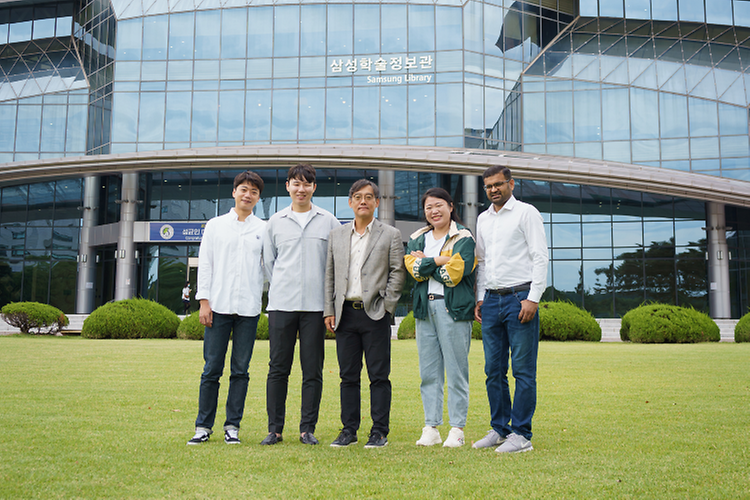 2022-09-19
2022-09-19J.-Y. Choi / H. K. Yu joint research team develops Ultrahigh Porosity MgO Microparticles for Heat-Energy storage The joint research team led by Professor Jae-Young Choi at SKKU school of advanced materials science, and engineering and professor Hak Ki Yu at Ajou University department of materials science and engineering has developed Ultrahigh-Porosity MgO Microparticles for thermochemical heat-storage reaction with high stability and exceptional reactant permeability. Professor Choi is also the co-CEO of C&C materials. Regarding paper has been published on Advanced Materials with the title “Ultrahigh-Porosity MgO Microparticles for Heat-Energy Storage”. Research on renewable energy, and waste heat retrieval and conversion, has been the key for carbon neutrality. Among those research retrieval of industrial waste heat has earned significant interest. Naturally, the development of materials that can meet the criteria for industrial waste heat retrieval is now more important than ever. Fig. Schematic illustration of the strategy for synthesizing porous MgO and images of a porous MgO particle. The research team has introduced ultrahigh porous structure to magnesium oxide (MgO), a highly promising candidate for waste heat storage, to develop high-performance heat energy storing material. This Ultrahigh Porosity MgO has 4 times more surface area than commercial MgO, and therefore is free of swelling during heat storage, enabling heat storage capacity 7.2 times bigger than commercial MgO. This Ultra-high Porosity MgO is expected to serve as key material for chemically storing industrial waste heat, and the research team will carry out follow-up research to develop new materials and control the structure of existing materials to overcome obstacles of nanomaterials. Funded by the National Research Foundation of Korea (NRF), this work has been published on Advanced Materials (IF=32.086) in July 2022. ※ Title: Ultrahigh-Porosity MgO Microparticles for Heat-Energy Storage ※ Authors: Xue Dong1, Ghulam Asghar, Bum Jun Kim#, Hak Ki Yu# ※ DOI: https://doi.org/10.1002/adma.202204775 1 : Lead author 2 : Corresponding author
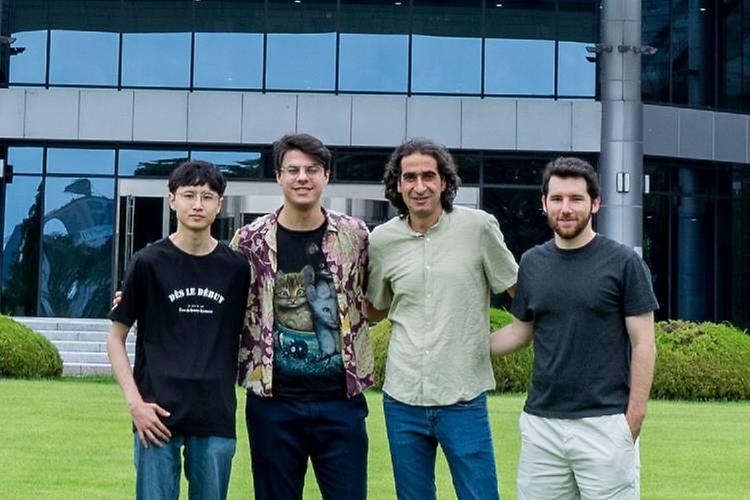 2022-08-16
2022-08-16Artificial intelligence (AI) for understanding and characterizing the ductile-brittle behaviors of Mg based materials On June11th, the research team led by Prof. Kotiba Hamad at the school of advanced materials science and engineering (AMSE)published a paper titled “Brittle and ductile characteristics of intermetallic compounds in magnesium alloys : A large-scale screening guided by machine learning” in the Journal of Magnesium and Alloys (IF =11.8) which is ranked the 1st in the category of metallurgy & metallurgical engineering according to Clarivate’s Journal Citation Reports’ (JCR) ranking. This study is one of the woks conducted by this group to investigate the applicability and the potential of AI techniques in the field of materials discovery and design. The findings of this work showed that, by machine learning (ML), a technique of AI, the brittle-ductile characteristics of intermetallic compounds that form in magnesium-based alloys are reliably, accurately, and quickly predicted. The ML results were validated by theoretical calculations done by density functional theory (DFT), shown by the figure below. The results can facilitate the designing of magnesium alloys with high performance for structural applications. This led to say that, due to the exploding computational capabilities, artificial intelligence, in its machine learning subcategory, has been utilized heavily in the field of material discovery and design for its ability to construct data-driven models that are magnitude faster than conventional experimentation or even physics-driven modeling and simulation. The present research group; Kotiba Hamad (Professor), Russlan Jaafreh (PhD candidate), Kang Woo Seong (Graduate collaborator/Currently working in ‘Computer Systems and Intelligence Laboratory’), and Santiago Pereznieto (Masters Student), have been utilizing the capabilities of AI in the field of material science & engineering, and have published multiple papers regarding this topic in high-tier journals such as: ACS Applied Materials & Interfaces, Journal of Materiomics and many more. Related Links and professor’s website: - Russlan Jaafreh, Yoo Seong Kang, Kotiba Hamad, Journal of Magnesium and Alloys 2022, DOI: doi.org/10.1016/j.jma.2022.05.006. - Russlan Jaafreh, Yoo Seong Kang, and Kotiba Hamad, ACS Applied Materials & Interfaces 2021 13 (48), 57204-57213, DOI: doi.org/10.1021/acsami.1c17378 - Professor Kotiba’s Website: kotibahamad995.wixsite.com/aem-skku













